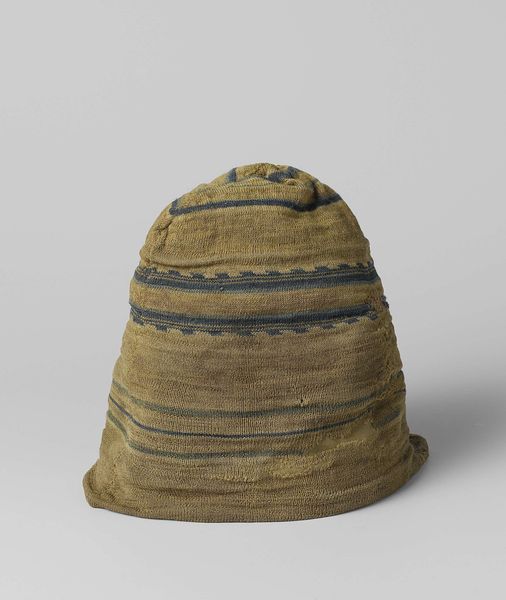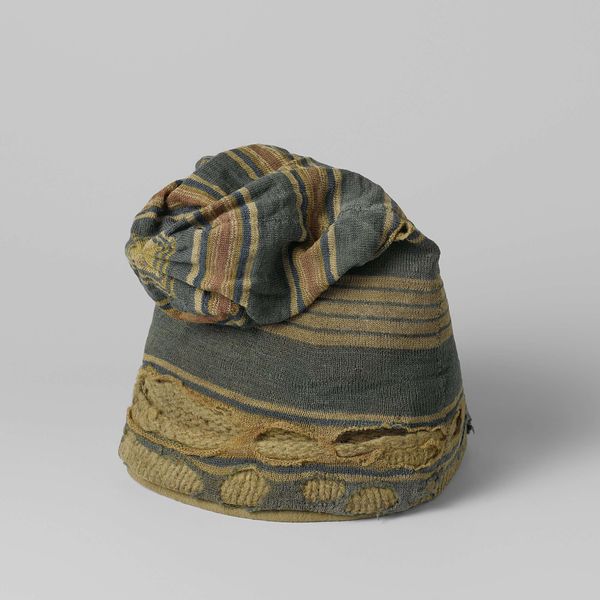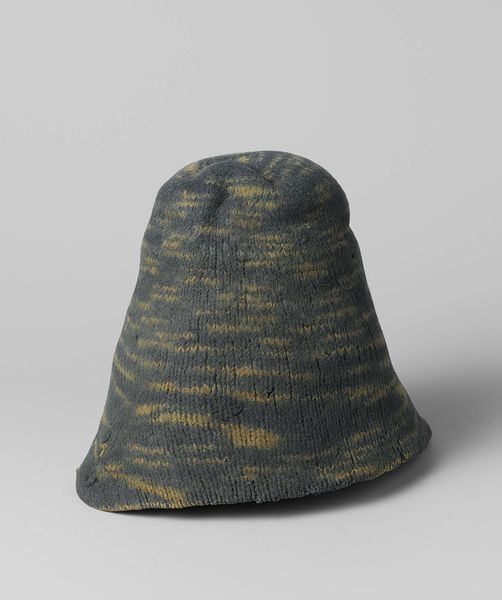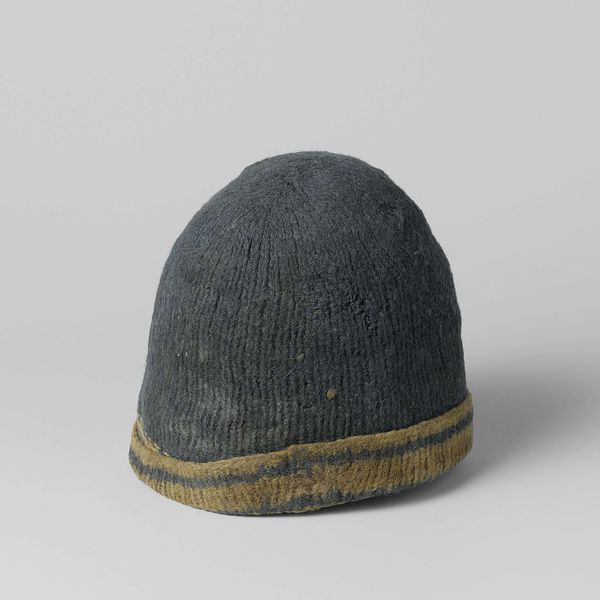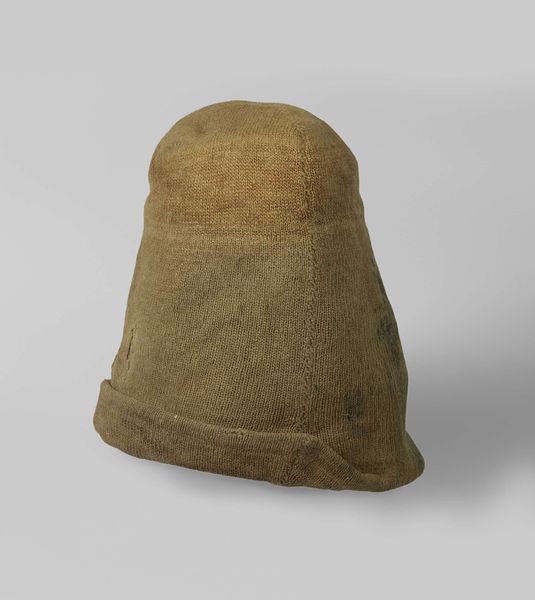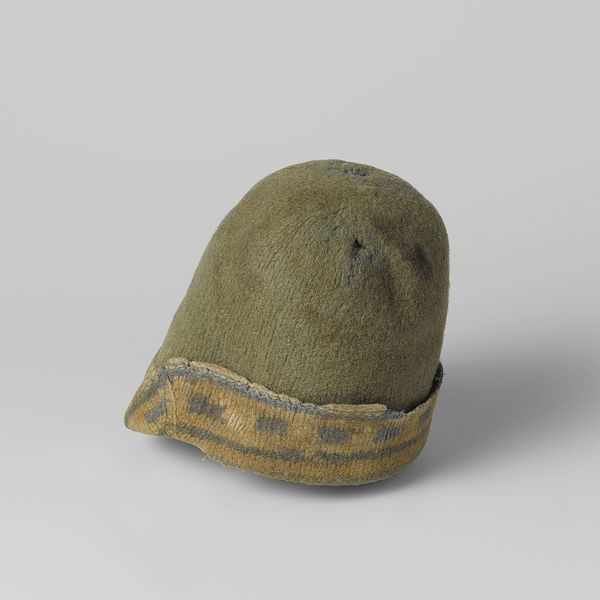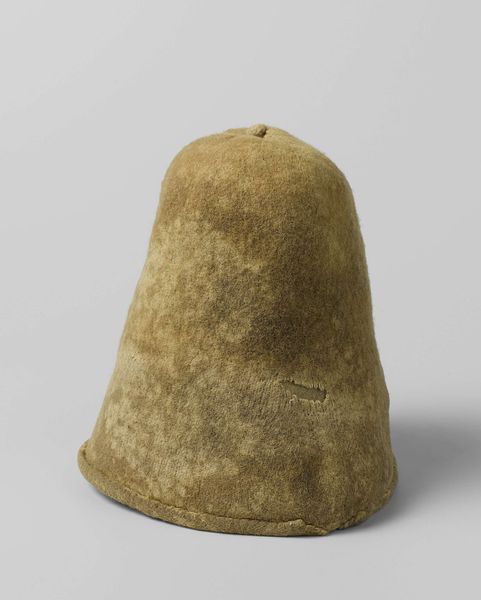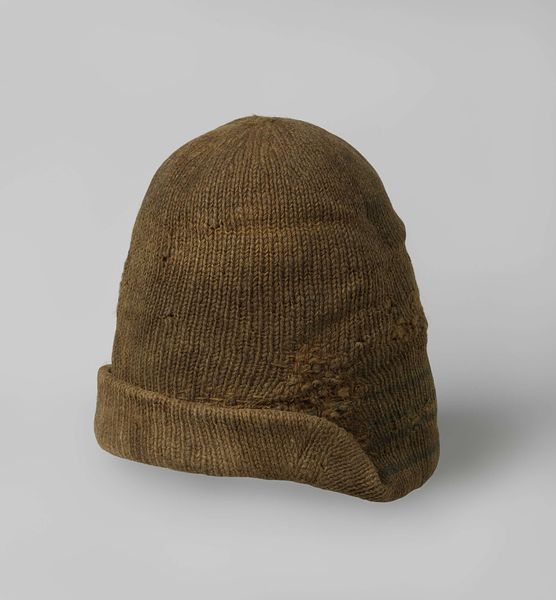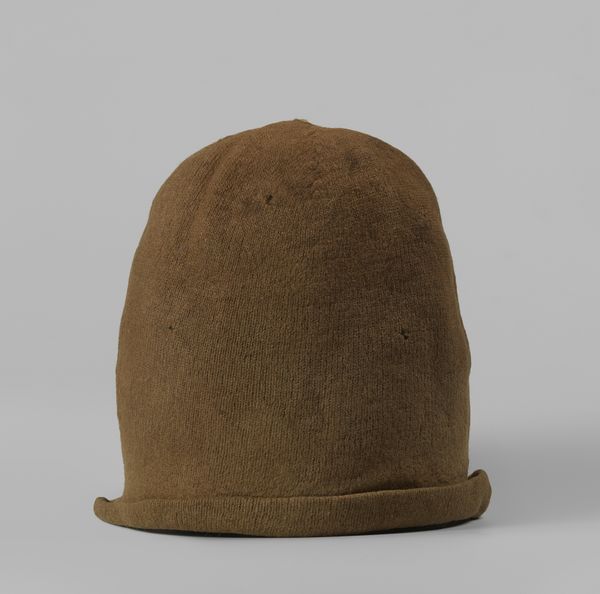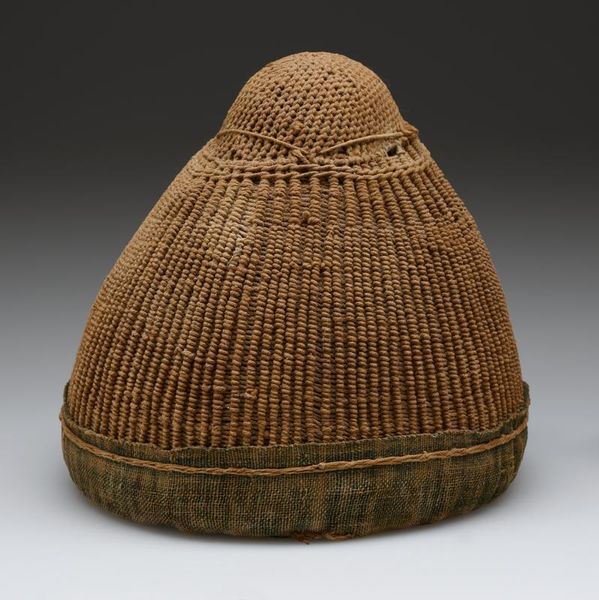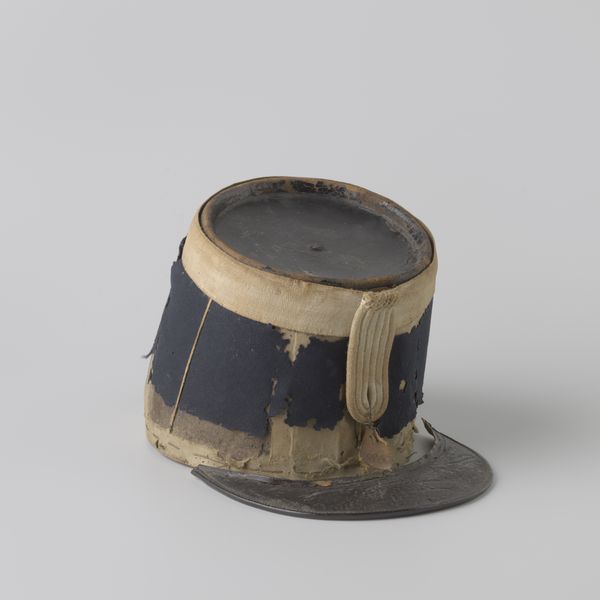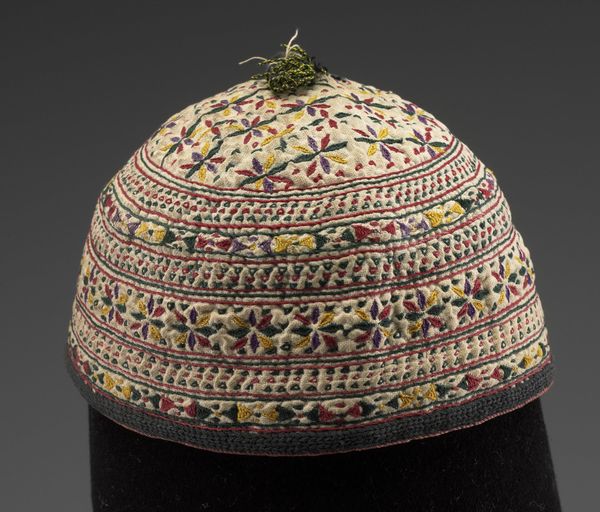
textile
#
dutch-golden-age
#
textile
#
folk-art
Dimensions: width 35 cm, height 30 cm, depth 29.5 cm, circumference 60 cm, length 28 cm
Copyright: Rijks Museum: Open Domain
Curator: Well, look at that! The wool has taken on this faded blue. Almost like ocean spray. What do you think of the form, this quirky bell shape? Editor: Its simplicity speaks volumes. Considering its place in history, as one of the Woollen Caps worn by Dutch Whalers sometime between 1700 and 1800, the form seems quite apt. Functional clothing. Curator: Precisely. Utilitarian almost! I can imagine pulling it down tight against a North Atlantic gale... those horizontals suddenly evoking the unending horizon. Gives me shivers! Editor: The horizontal stripes create a distinct visual language—signifiers within a society bound by the rigid dictates of maritime labor. This was folk art as survival. Did the colors speak too? Was there a social dimension present? Curator: That's interesting... because the anonymous artisan of this humble garment likely intended no such meaning! Still, these objects accrue meaning just by surviving. What they tell us about lived experience... incredible! I'd like to believe there were families lovingly producing these garments. Each imperfect cap becoming a signal of identity. Editor: These aren't luxury goods created in sterile conditions; it carries within its fibres stories of both brutality and community. Dutch whaling was notoriously dangerous, the human costs almost unfathomable. We need to look at the environmental as well as the human costs of this practice to have any kind of holistic understanding. Curator: Absolutely. A small item, imbued with grand stories, dark depths! To me, these woollen caps speak to resilience, both physical and communal. To be able to withstand blustery cold temperatures out on the ocean. The simple horizontal pattern really stands out, doesn't it? What started as utility morphs into... almost an emblem. Editor: Ultimately it reveals a narrative—the convergence of environmental struggle, human exploitation, and resource extraction—encoded within humble woollen threads.
Comments
rijksmuseum about 2 years ago
⋮
In 1980 archaeologists investigated the graves of 185 Dutchmen – whale hunters and workmen of the train oil refineries – who had died on or near Spitsbergen during the 17th century. The skeletons were still wearing their knitted woollen caps. Each cap was individualized; the men recognized one another only by the pattern of stripes on the caps. The men were bundled up so tightly against the fierce cold that only their eyes were visible.
Join the conversation
Join millions of artists and users on Artera today and experience the ultimate creative platform.

